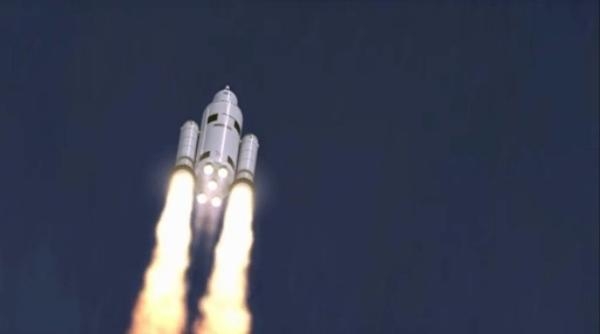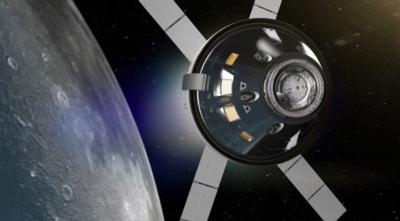Thu, Mar 09, 2017
Directs Agency To Pursue A 'Balanced Portfolio' Of Activities
The U.S. House of Representatives on Tuesday approved the National Aeronautics and Space Administration Transition Authorization Act of 2017 (S.442), which cleared the Senate last month. This bipartisan, bicameral legislation reaffirms Congress’ commitment to NASA, and directs the agency to pursue a balanced portfolio of activities.

"The NASA Transition Authorization Act of 2017 reaffirms our support for the bold visions and commitments that will shape America’s future in space," said House Science Committe chair Lamar Smith (R-TX). "This bill reiterates the importance of maintaining NASA’s continuity of purpose to ensure America remains a leader in space exploration. It also directs NASA to create a roadmap for human exploration and guides the future path of exploration for decades to come. With the passage of this bill, we take another step in making America great again. ”
"The NASA Transition Authorization Act of 2017 is a bipartisan and bicameral bill that creates certainty and long-term stability for NASA and America’s human space flight programs," said pace Subcommittee Chairman Brian Babin (R-TX). "The bill continues support for the International Space Station, the Space Launch System, the Orion crew vehicle, and the commercial cargo and crew programs. Its passage puts NASA and America on a clear path forward into the next chapter of space exploration. I am also pleased to note the inclusion of the TREAT Astronauts Act, legislation that I introduced to ensure that our nation’s astronauts receive support for medical issues associated with their service while also advancing research in long-term space missions.”

The NASA Transition Authorization Act of 2017 authorizes the House’s proposed Fiscal Year 2017 funding level of $19.5 billion. The bill maintains support for the James Webb Space Telescope, the Space Launch System, the Orion crew vehicle, the International Space Station, and the commercial crew and cargo programs. The bill makes the determination that the technological and scientific goals of the Asteroid Robotic Redirect Mission have not been demonstrated, and requires a report on alternatives to demonstrate the technologies needed for a human mission to Mars.
The NASA Transition Authorization Act also supports NASA’s Mars 2020 rover, the Wide-Field Infrared Survey Telescope, as well as direction for a mission to Europa. It directs the NASA administrator to seek reimbursement whenever responsibilities are transferred to NASA from another agency or when NASA funds another agency’s activities. It also includes the TREAT Astronauts Act, which gives NASA the ability to care for our astronauts and enhance our understanding of the effects of spaceflight on the human body.
(Source: House Science Committee news release)
More News
Circle To Runway (Runway Number) Used by ATC to inform the pilot that he/she must circle to land because the runway in use is other than the runway aligned with the instrument appr>[...]
Aero Linx: National Aviation Safety Foundation (NASF) The National Aviation Safety Foundation is a support group whose objective is to enhance aviation safety through educational p>[...]
At Altitude Of About 250-300 Ft Agl, The Airplane Experienced A Total Loss Of Engine Power On November 6, 2024, at 1600 central standard time, a De Havilland DHC-1, N420TD, was inv>[...]
From 2009 (YouTube Edition): Three Hour Flight Was 'Flawless' -- At Least, Until Mother Nature Intervened For anyone who loves the aviation business, this was a VERY good day. Afte>[...]
Also: AMA Names Tyler Dobbs, More Falcon 9 Ops, Firefly Launch Unsuccessful, Autonomous F-16s The Air Force has begun ground testing a future uncrewed jet design in a milestone tow>[...]
 ANN's Daily Aero-Term (05.05.25): Circle To Runway (Runway Number)
ANN's Daily Aero-Term (05.05.25): Circle To Runway (Runway Number) ANN's Daily Aero-Linx (05.05.25)
ANN's Daily Aero-Linx (05.05.25) NTSB Prelim: De Havilland DHC-1
NTSB Prelim: De Havilland DHC-1 Classic Aero-TV: The Boeing Dreamliner -- Historic First Flight Coverage
Classic Aero-TV: The Boeing Dreamliner -- Historic First Flight Coverage Airborne-NextGen 05.06.25: AF Uncrewed Fighters, Drones v Planes, Joby Crew Test
Airborne-NextGen 05.06.25: AF Uncrewed Fighters, Drones v Planes, Joby Crew Test




